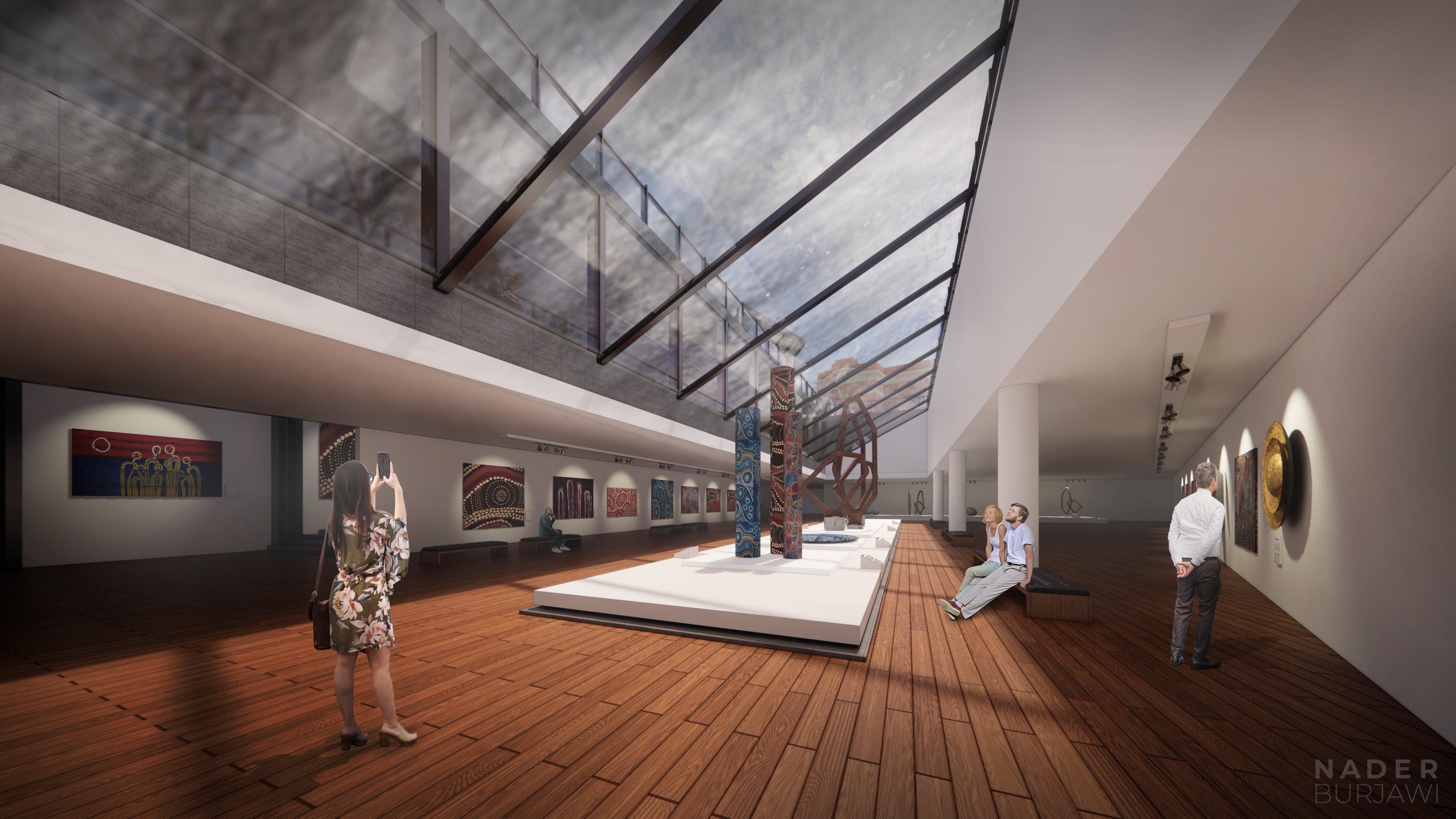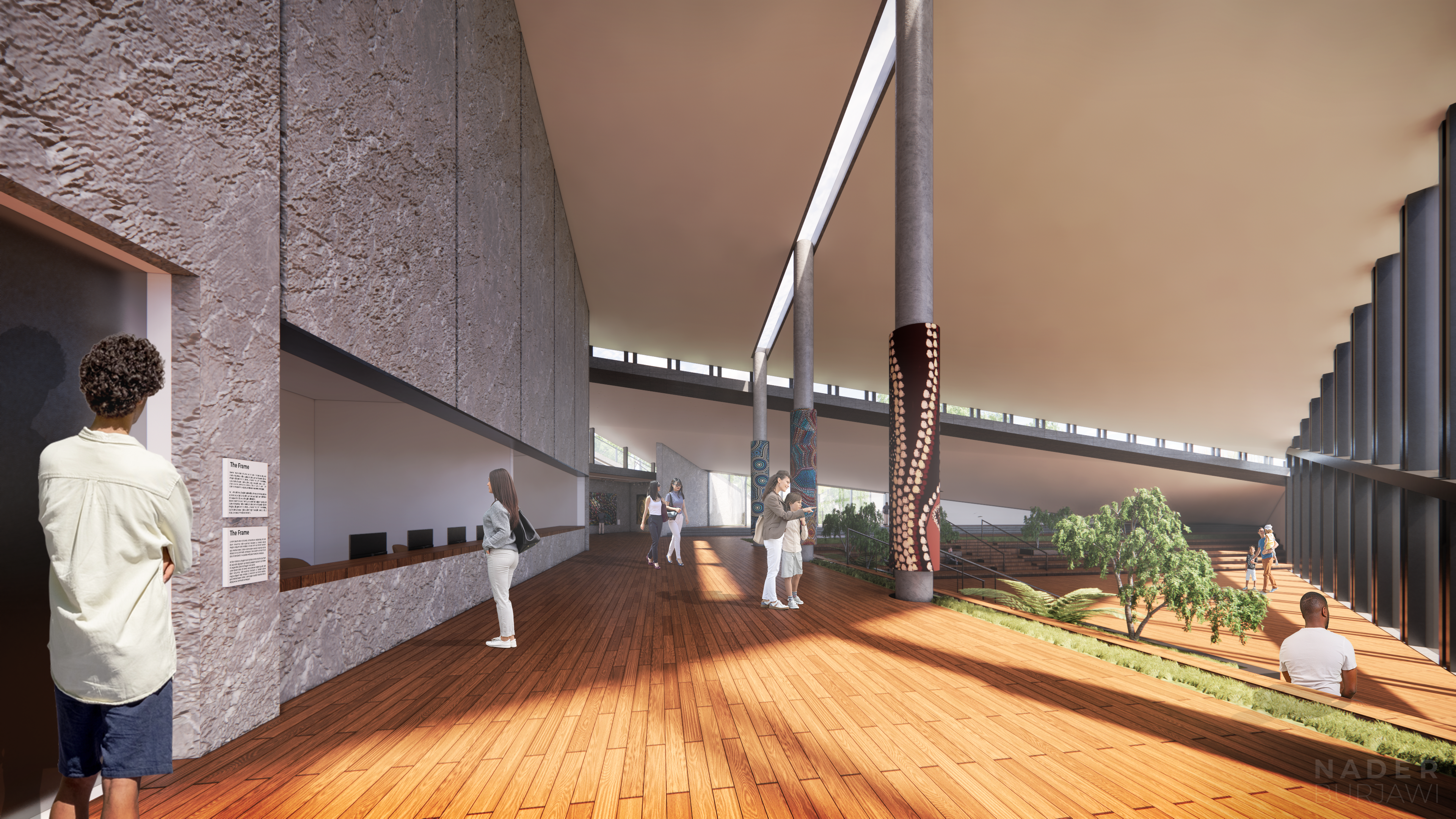The Willum Warrain Museum
Willum Warrain, a place of Art and Cultural Museum, stands as a testament to the celebration of our country's Indigenous history. Translated from the local Boon Wurrung language, Willum Warrain means 'Hut by the sea,' symbolizing a gathering place where Aboriginal and Torres Strait Islanders converge to explore their goals, ideas, and identity. This concept serves as a unifying force for the Newport community.
Recognizing that 98% of Australians engage in the arts in various forms, from music to galleries and live performances, this project places a spotlight on the creative arts of First Nation Australians, encompassing both artworks and sculptures.
The primary objective is to increase this engagement percentage by establishing a space that not only celebrates and narrates stories about the country but also supports the local art community in Newport. The museum is envisioned to be divided into three distinct divisions: the Art and Gallery Division, a hub celebrating Indigenous and local art in Melbourne; the Cultural & Ethnography Division, dedicated to the permanent collection of Indigenous artifacts for education and historical preservation; and an underground Native Botanical Garden, serving as a sanctuary for living plants, fostering scientific research, conservation, display, and education.
This comprehensive approach aims to create a dynamic and inclusive space that transcends traditional museum boundaries and becomes a vibrant hub for cultural exploration and artistic expression.






Museum visualisation. Cr. Nader Burjawi
Project Location: Newport in Melbourne
Located 10 km southwest of Melbourne's Central Business District, Newport is a suburb that has undergone significant transformations, with a particular focus on the Newport Triangle. Once renowned for its rich industrial history, which significantly shaped the suburb's culture, Newport's timeline reveals a fascinating evolution in both architecture and cultural identity. A pivotal shift occurred during the industrial revolution, marked by the establishment of railway workshops and the emergence of industrial factories within the suburb.
However, as the 20th century unfolded, Newport began a noteworthy transition towards a more residential appearance. The selection of this site was strategic, driven by the diverse array of public transportation options available in close proximity, highlighting the suburb's adaptability and responsiveness to changing urban needs over the years.
Newport analysis. Cr. Nader Burjawi
Art engagement. Cr. Nader Burjawi
Ninety-eight percent of Australians actively participate in the arts, whether through music, galleries, or live performances, underscoring the integral role of creative expression in our daily lives. This project specifically centres on the creative arts of First Nation Australians, encompassing both artworks and sculptures.
The primary objective is to contribute to increasing this engagement percentage by establishing a dedicated space that celebrates and narrates stories about our country. Additionally, the project aims to foster support for the local art community in Newport by creating dedicated spaces for local artists to exhibit and refine their artistic skills.
Form Making Exploration: Concept Modelling
Following in-depth research and analysis of the project site, we embarked on an experimental journey, utilizing physical model-making techniques to iterate and envision the optimal layout for the museum. Our aim was to strategically allocate programs to offer essential services while fostering urban density within the location. Three key drivers guided our design process, influencing every decision and shaping the overall framework of our approach
Form Exploration: Investigating iterations that foster interaction and urban permeability. Cr. Brianna, Jade, Nader Burjawi

Form-making: Experimentation using modelling foam

Form-making: Refined form iteration
Conceptual Parti Diagram: Capturing the essence of the museum's architectural form. Cr. Nader Burjawi
Conceptual Model
The ultimate realization of the project manifests as a captivating green landscape terrace when viewed from above. Internally, it seamlessly accommodates museum services and programs, serving as an iconic representation of Newport. This design not only pays homage to the rich history embedded in the location but also transforms into a celebrated symbol that resonates with the essence of what once existed there.
Program Distribution + Circulation Cr. Nader Burjawi
West Elevation - A-A Cr. Nader Burjawi
Longitudinal section - A-A Cr. Nader Burjawi

L00 - Ground Floor

L01 - Restaurant Floor

B01 - Gallery/Amenities Floor

B03 - The Botanical Floor
Siteplan - Activities + Ground Green Coverage. Cr. Nader Burjawi